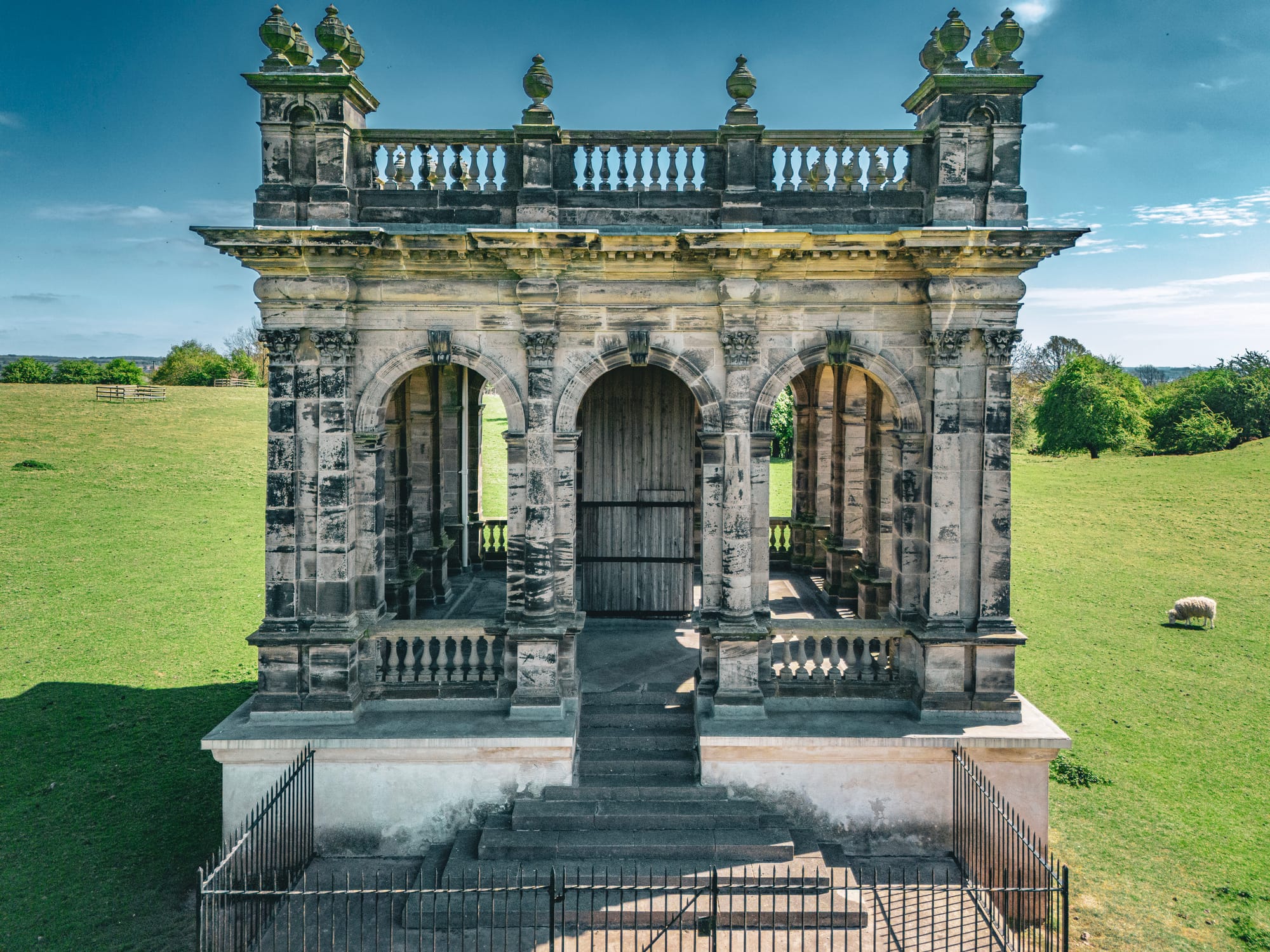Watch the video here on YouTube
Tucked away in the rolling parkland near the village of Sandon, Staffordshire, stands an unexpected piece of architectural history – the very top of the once-magnificent tower from Trentham Hall.
This Italianate tower, complete with Corinthian columns, urns, and elegant classical arches, originally crowned the main tower at Trentham Hall. It was designed around 1840 by the renowned architect Sir Charles Barry, best known for his work on the Palace of Westminster. The tower was a symbol of Trentham’s grandeur – a hall that had developed over centuries into one of Staffordshire’s most opulent country houses.

But by the early 20th century, Trentham Hall had fallen into disrepair. Industrial growth had led to the River Trent becoming heavily polluted. Once a picturesque feature of the estate, the river was described at the time as "a foul slimy sewer, brim-full of the impurities of every dirty crowded town that hugs its banks."
As Trentham’s appeal faded, the owners began selling off everything of value. Sculptures, doors, windows, furnishings, even entire architectural features, were auctioned off to raise funds. When demolition began in 1910, one prominent feature was saved: the top of the central tower.
It was carefully dismantled and transported to Sandon Park, where it was rebuilt on the estate’s highest point – all for the sum of £192 and 7 shillings. Today, the structure is known as Trentham Tower, and you can walk right up to it, as it sits just off a public footpath that runs through the grounds of Sandon Hall.

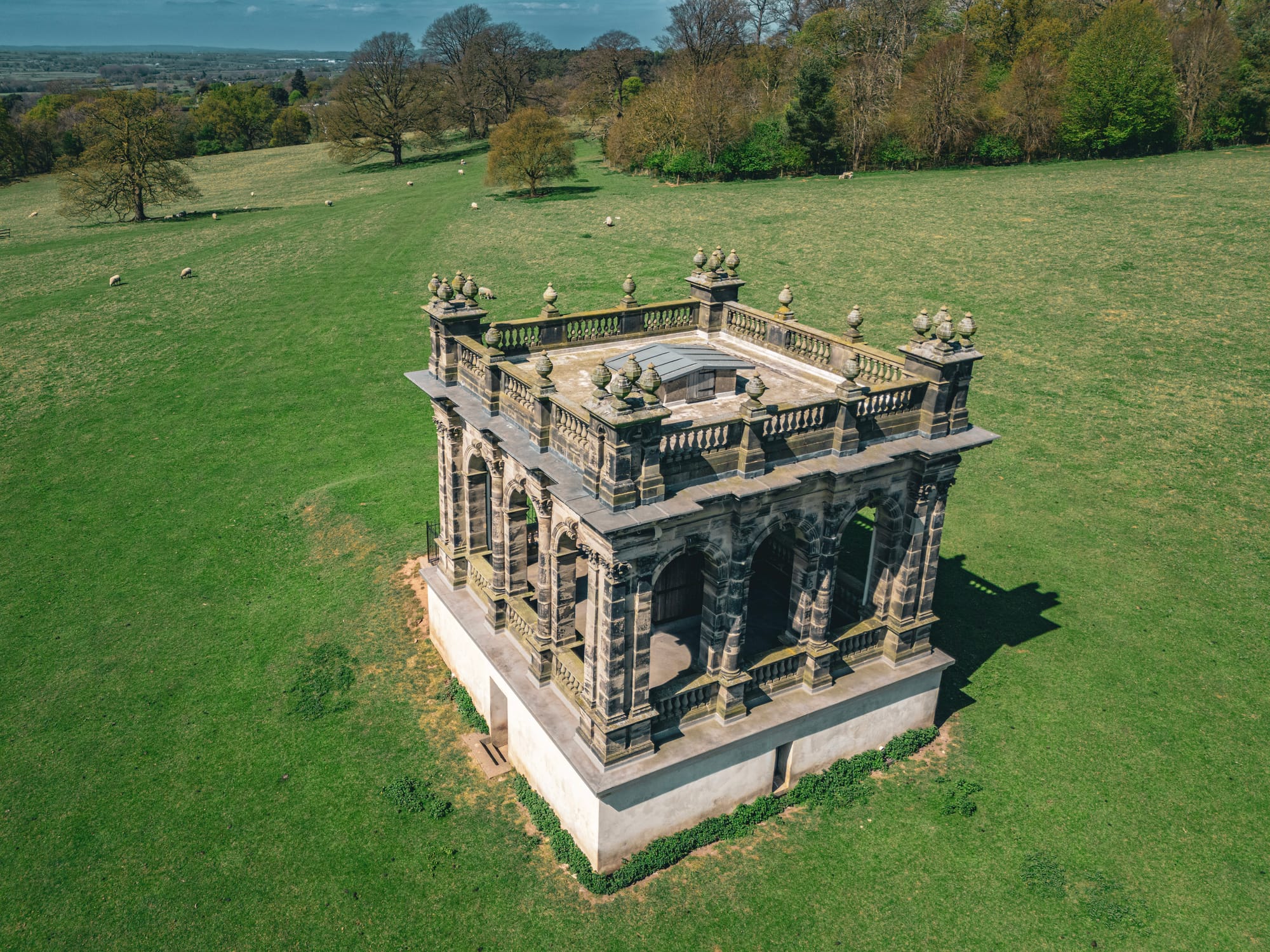
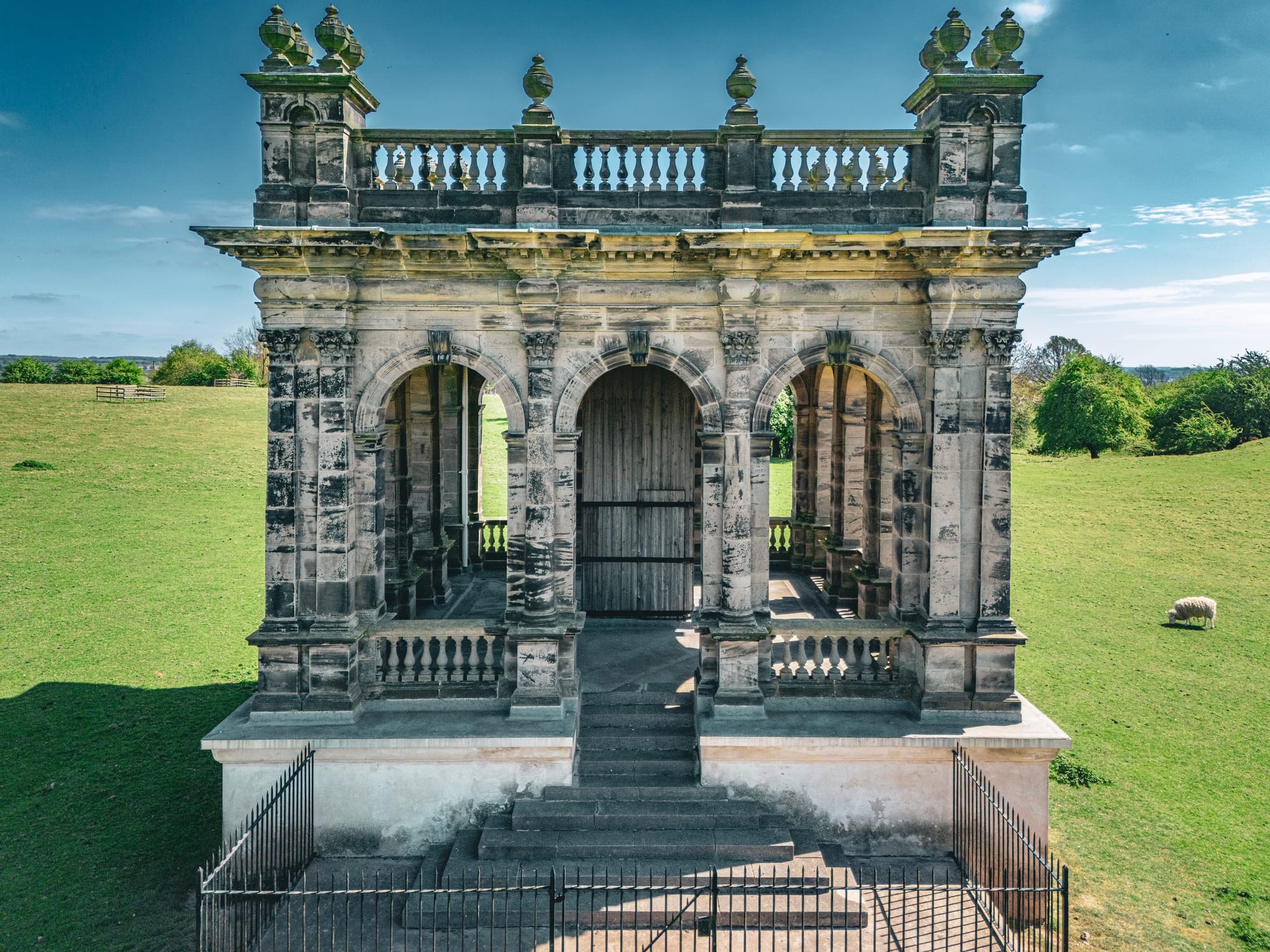
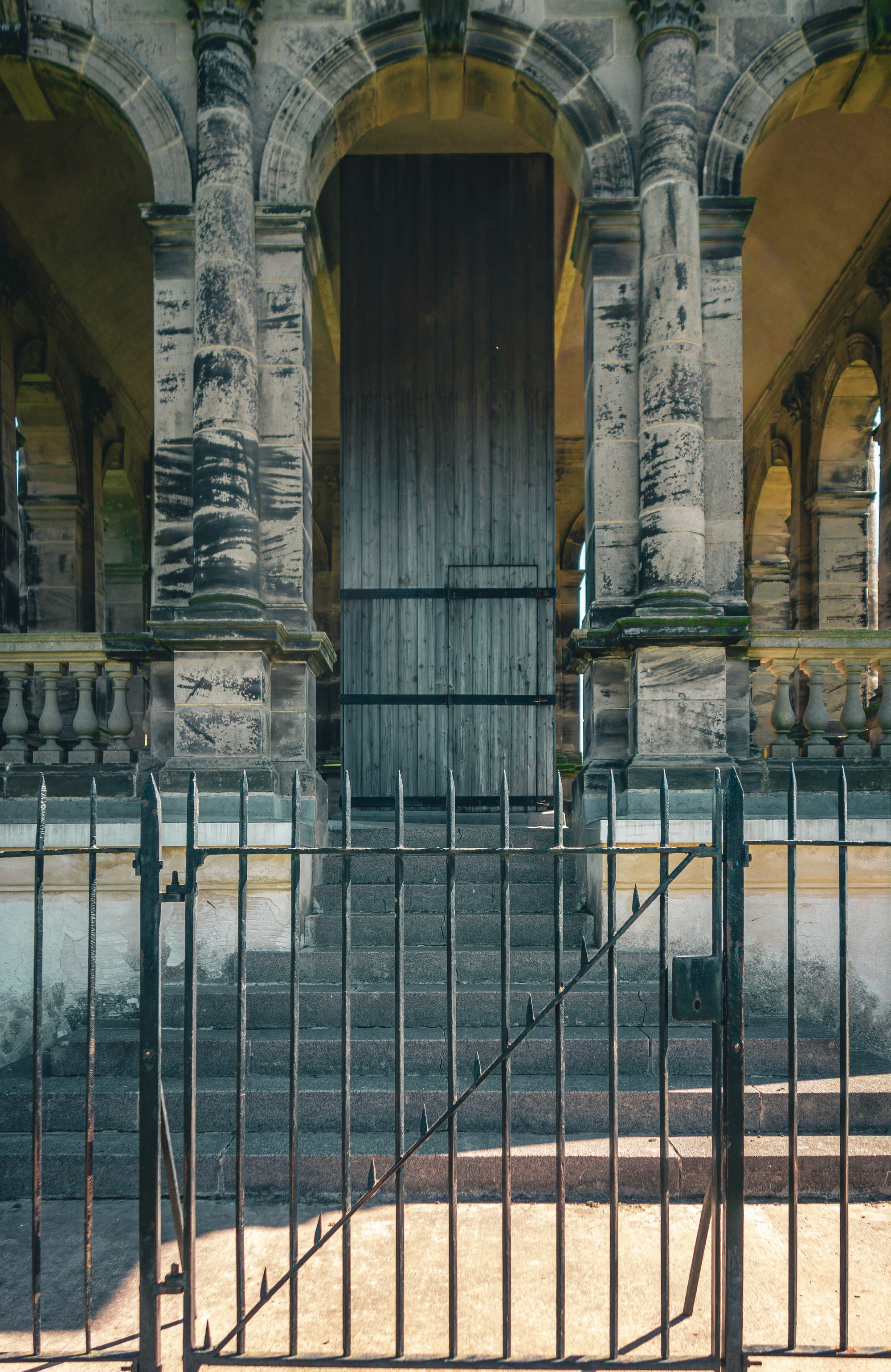
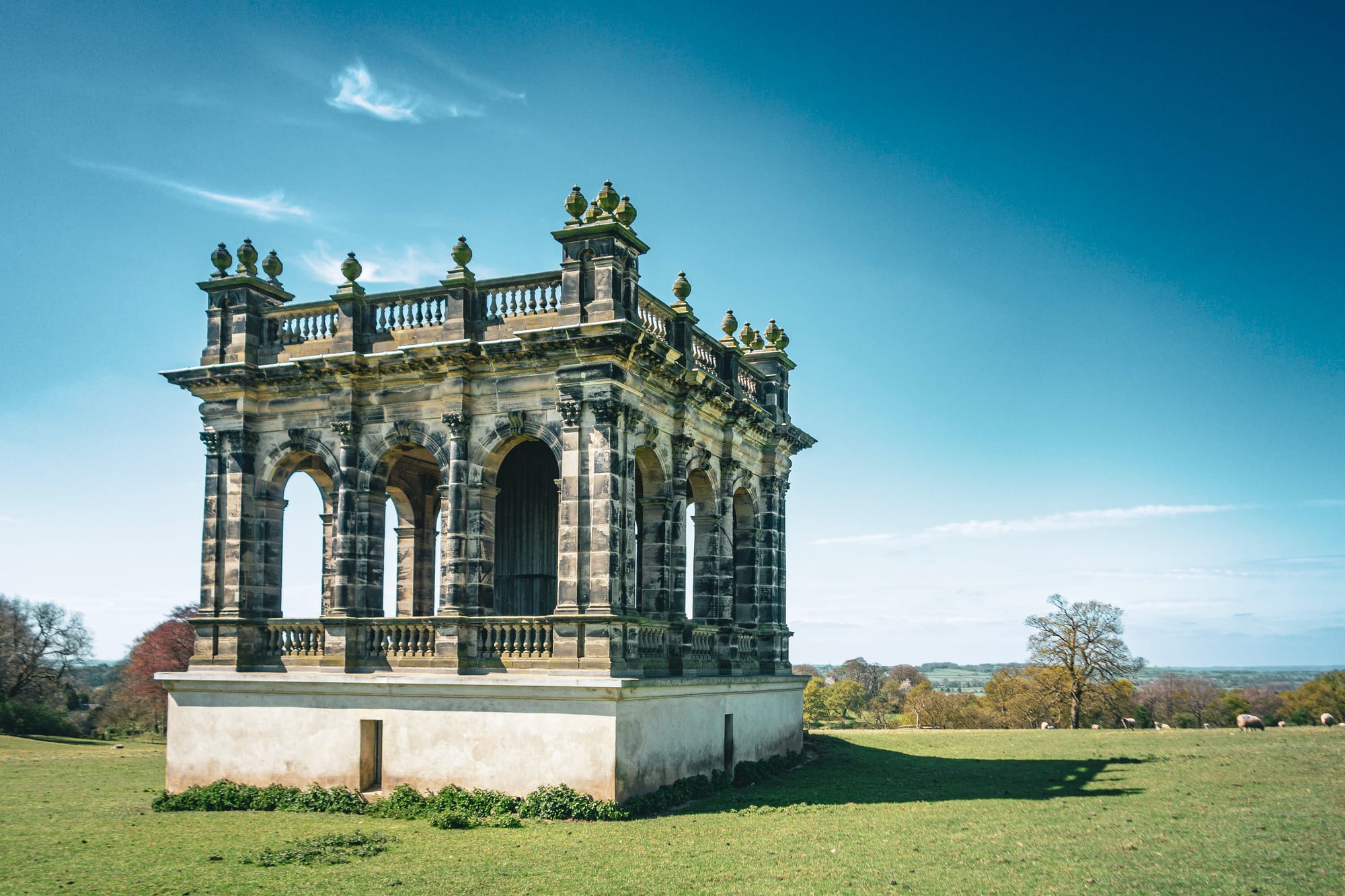
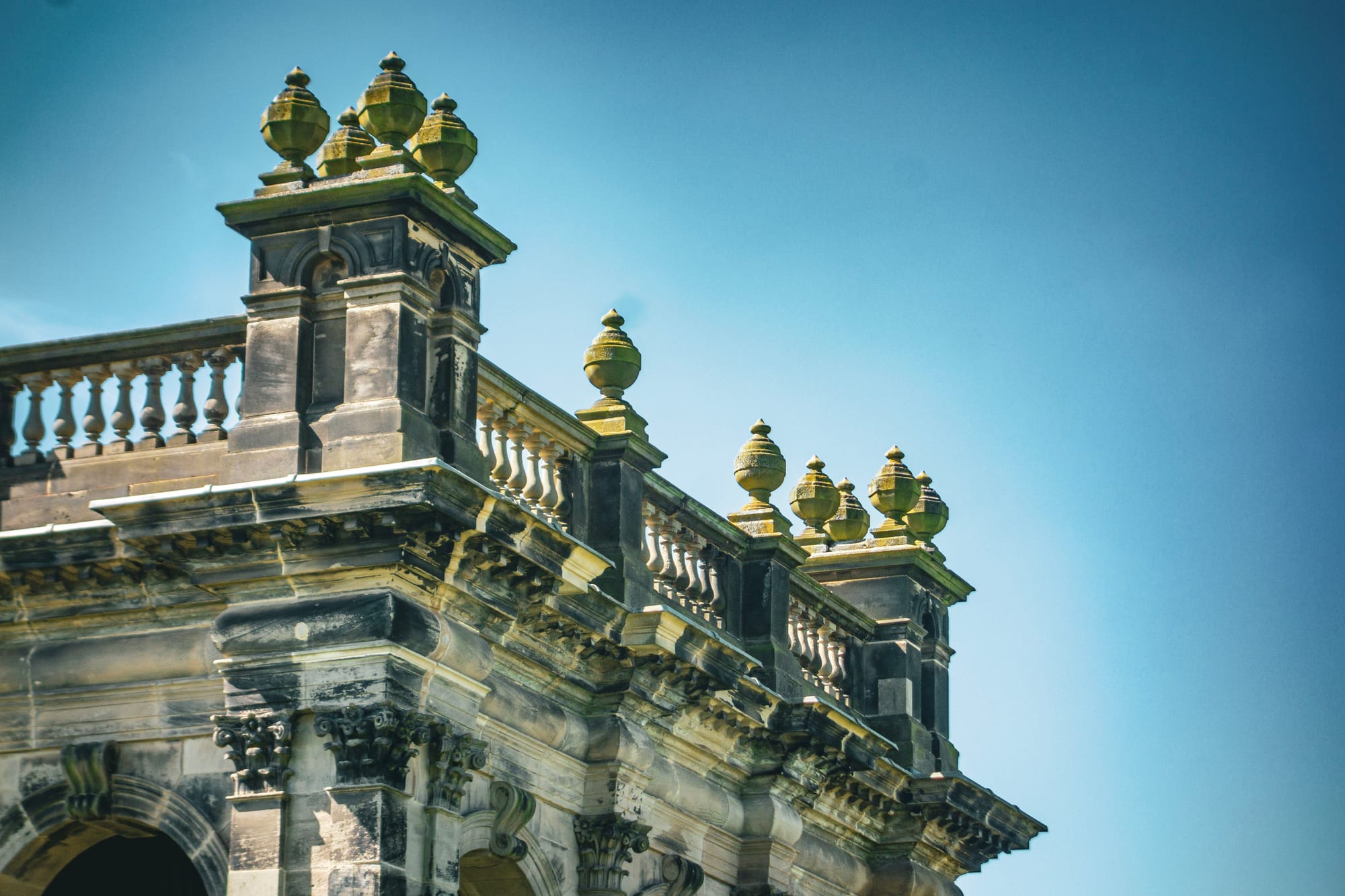

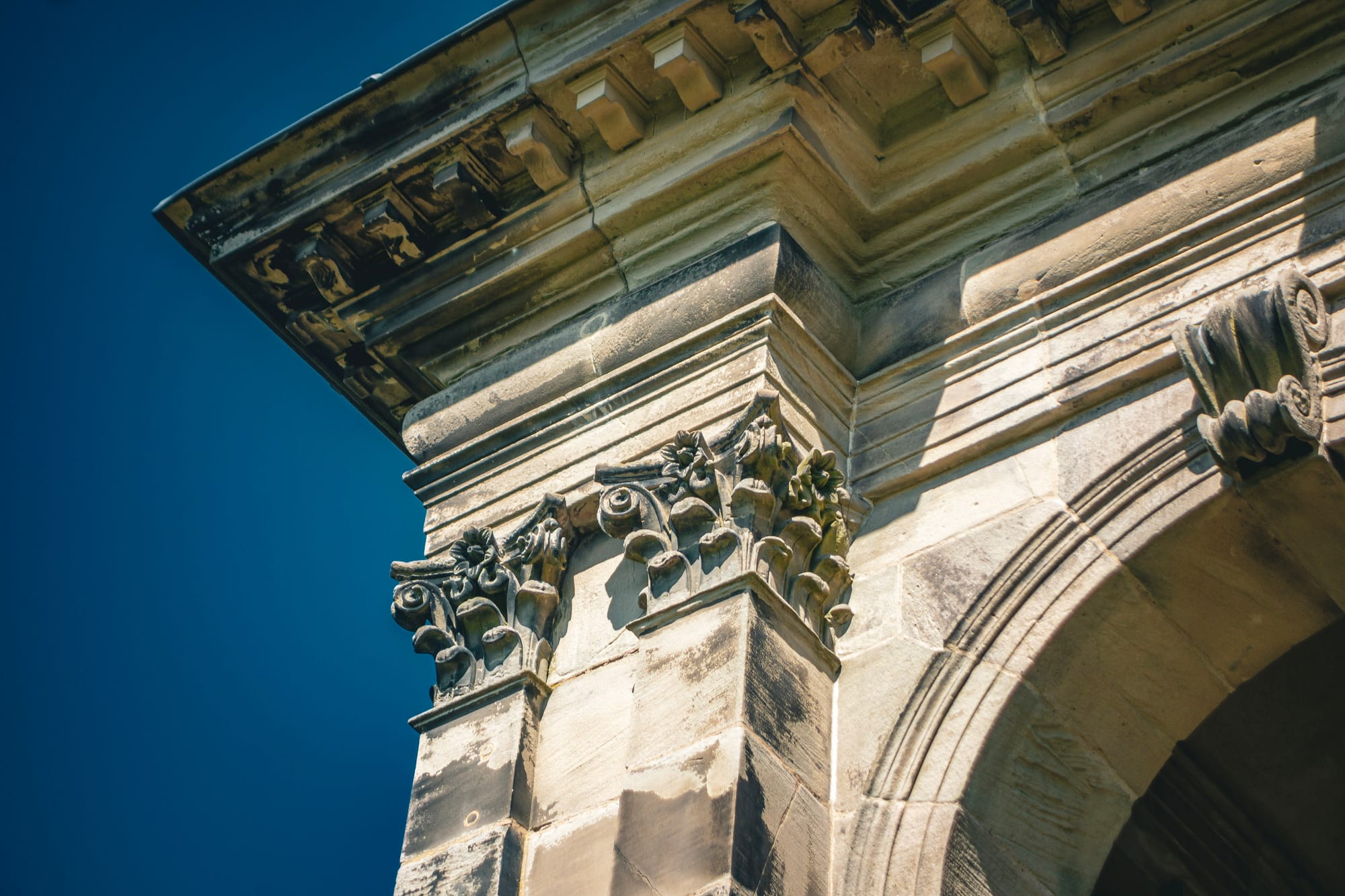
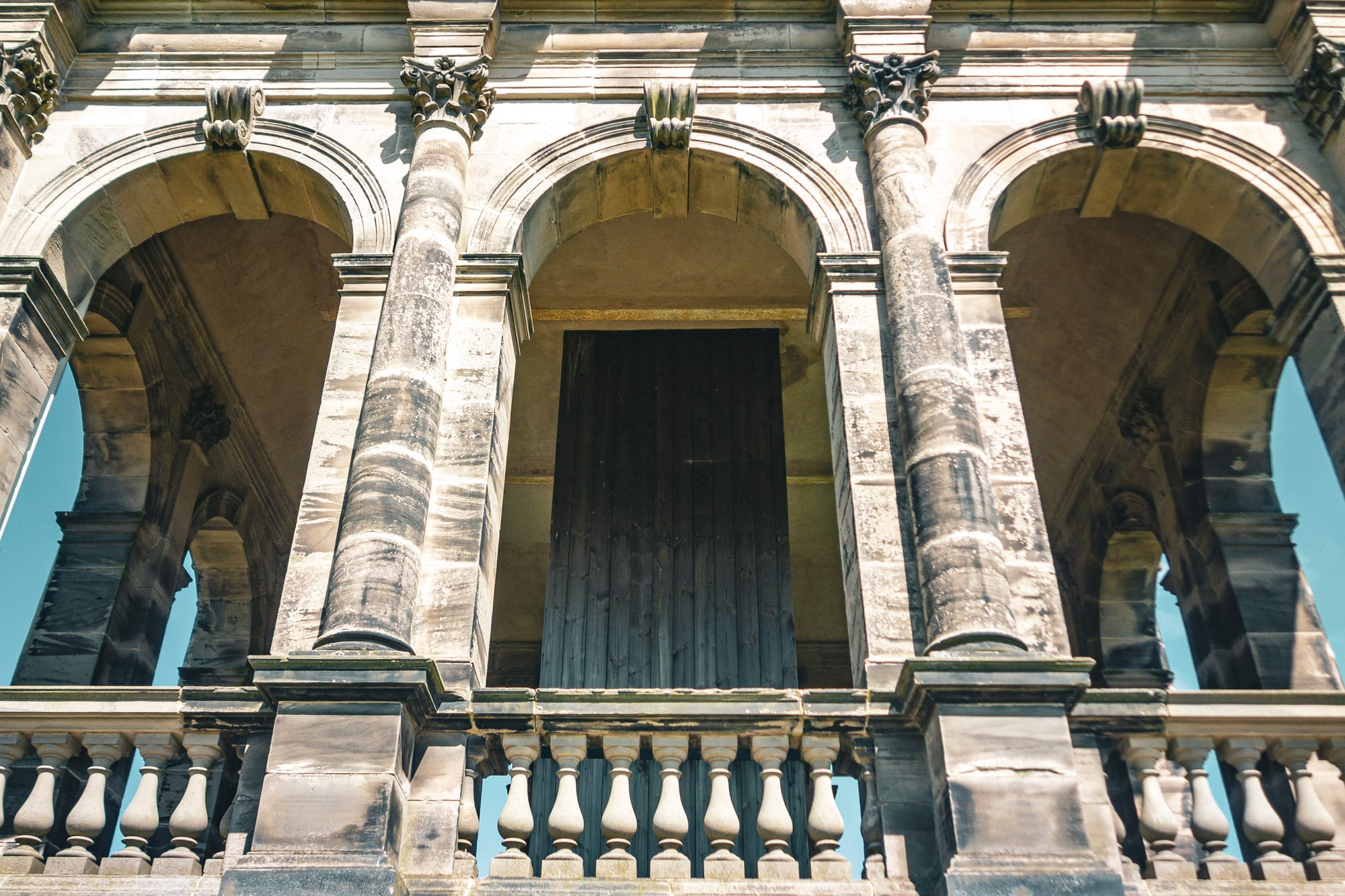
Trentham Tower, Sandon Park
The tower stood quietly for over a century, gradually weathering the elements, until a major conservation project in 2016 restored it to its former glory. Led by Oliver Architecture, the works included essential stone repairs and a new lime render to the base of the belvedere. In 2017, the project received an AABC Conservation Commendation at the Civic Trust Awards, recognising the tower as once again a proud and beautiful feature within this historic landscape.
But Sandon itself also has a rich and fascinating history. Once home to the Erdeswick family, the area contains a moated site – now a scheduled monument – believed to be the location of the original manor house. In the 18th century, Nathaniel Ryder, the 1st Baron Harrowby, transformed the estate with the help of architect Samuel Wyatt and landscape gardener William Emes. This included demolishing the old village and relocating it further from the newly designed hall and church.
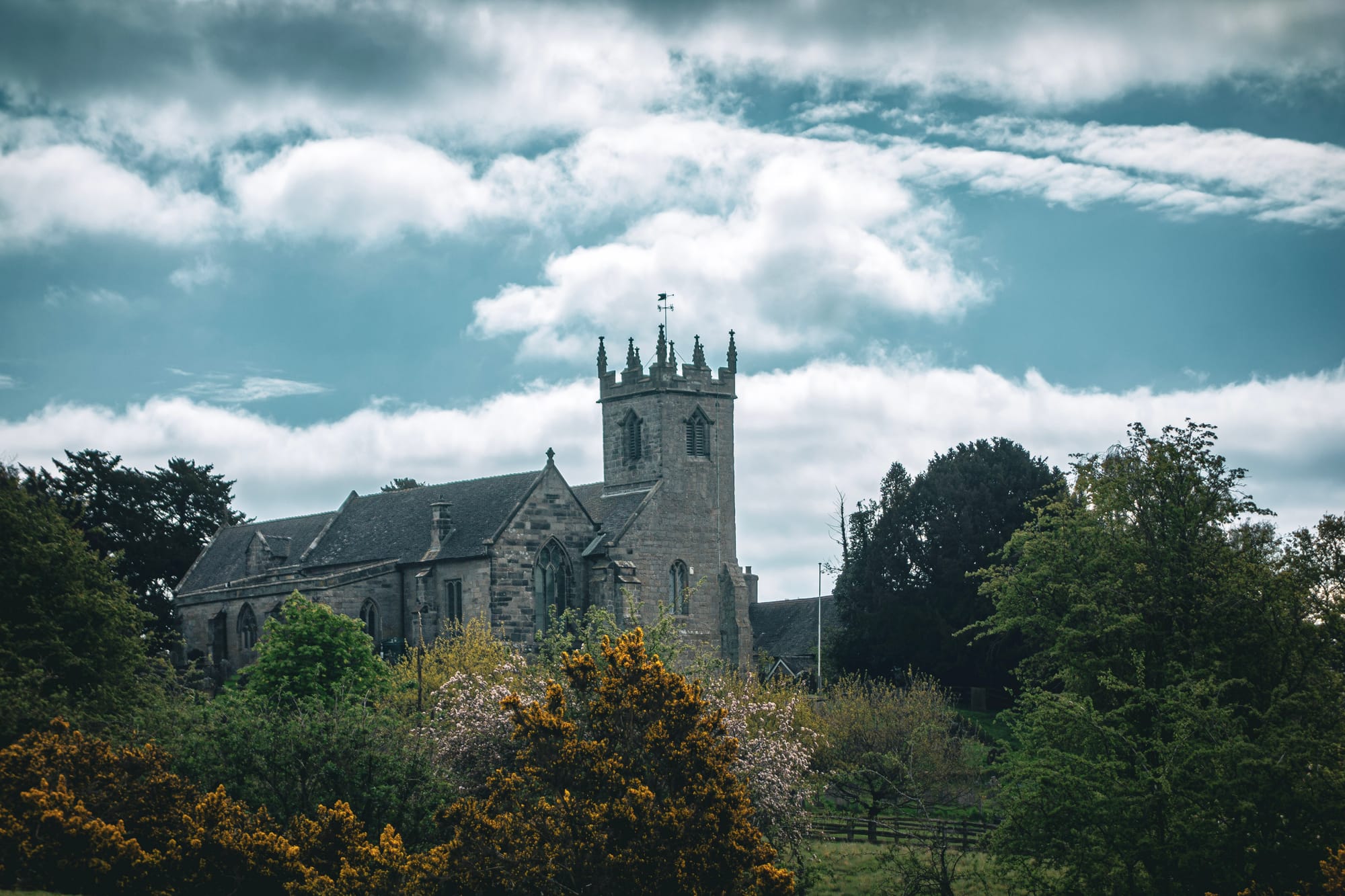
The current Sandon Hall was built in 1852 after a fire destroyed the previous residence. Designed by William Burn in the Jacobethan style, the hall remains a private family home and is listed Grade II*. The surrounding parkland offers picturesque walks, glimpses of history, and peaceful countryside views.
Whether you’re a local explorer or a heritage enthusiast, this corner of Staffordshire offers a unique and beautiful reminder of our region’s past – and the incredible journey that a single architectural feature can take, from one grand estate to another.
